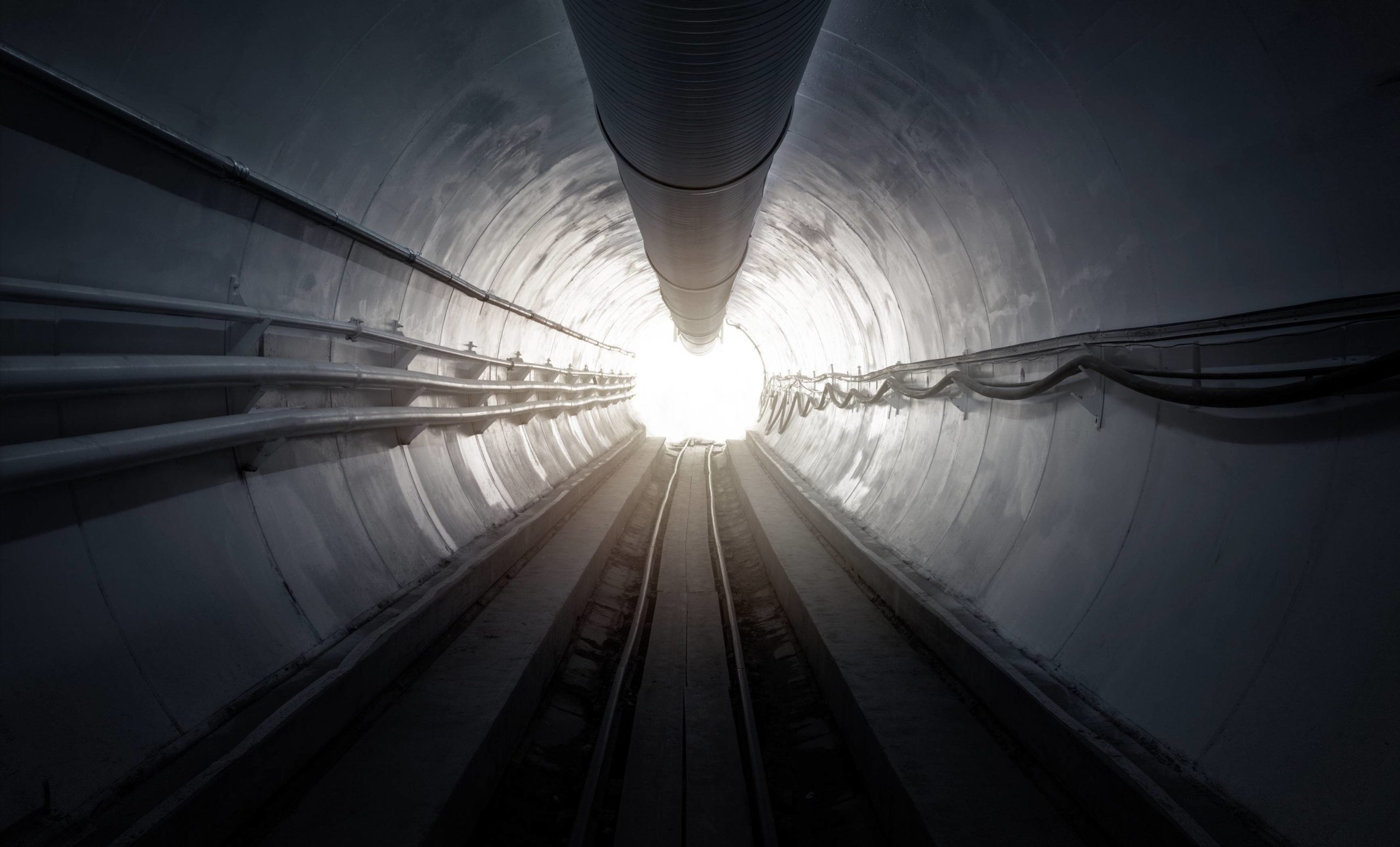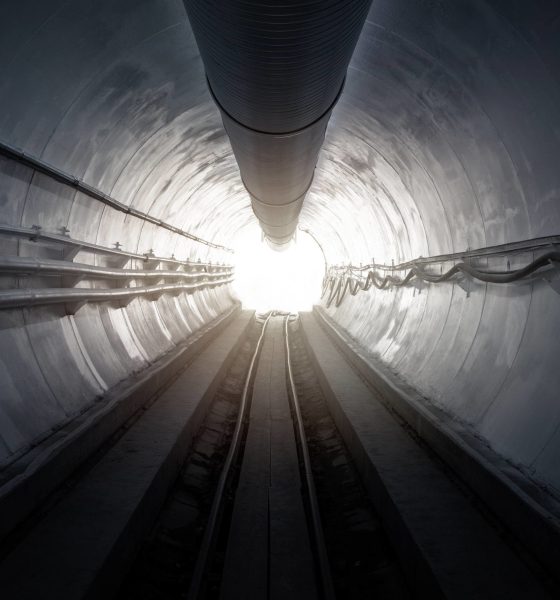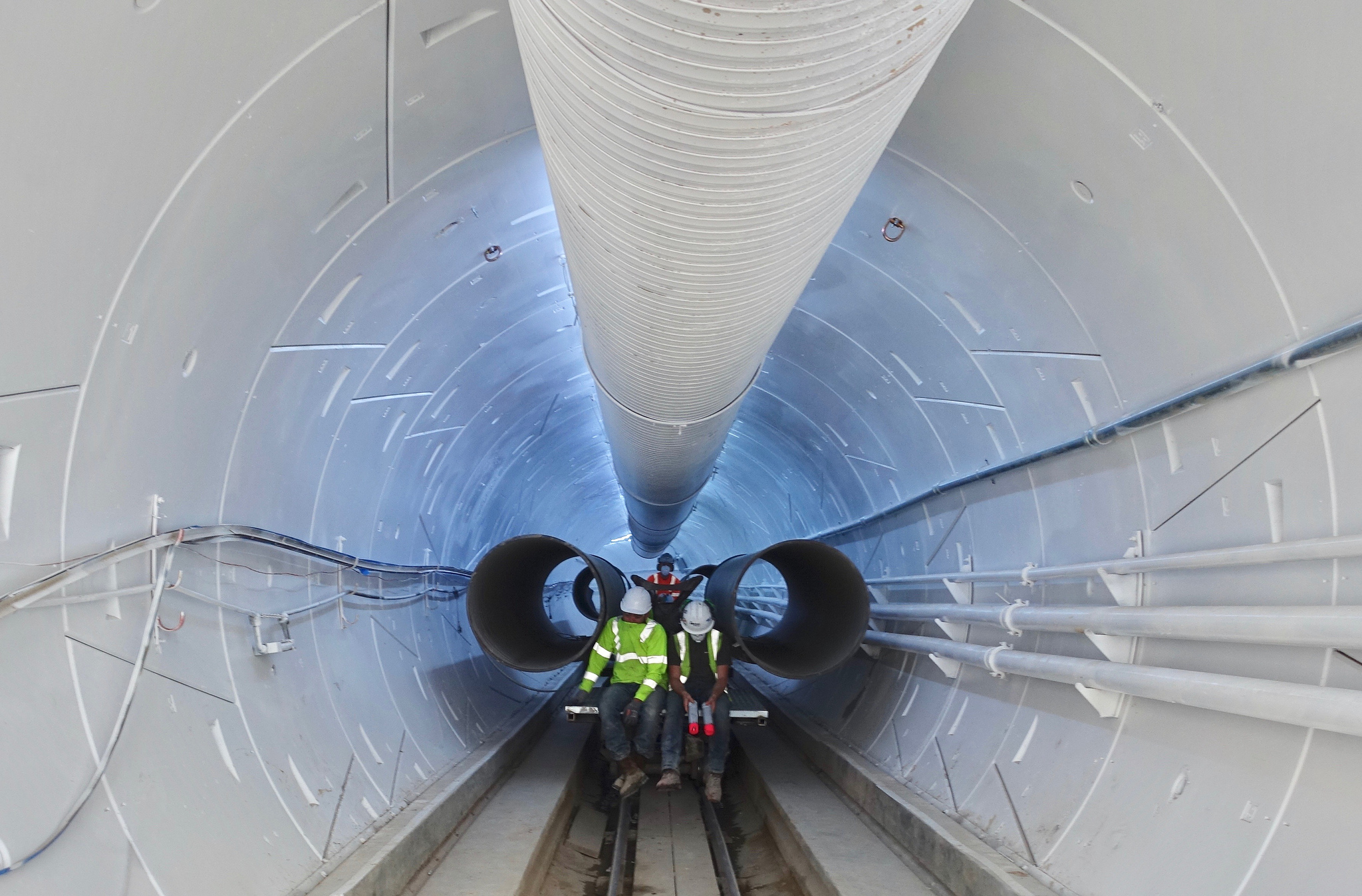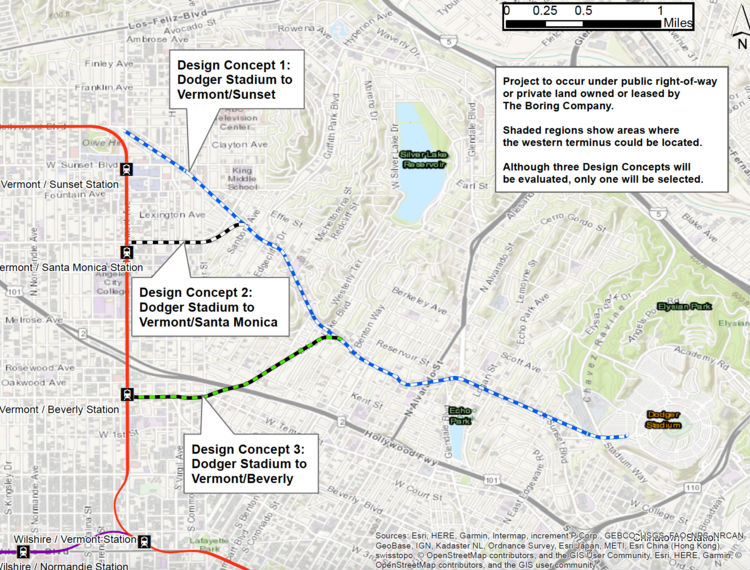

News
Why The Boring Company’s $10 million dollars per mile price tag is a game changer
With The Boring Company, Elon Musk hopes to overcome the pitfalls that drive up the costs of underground rail transport construction using good old-fashioned innovation with a dash of Silicon Valley startup dust (dirt?). Currently, most U.S. local and state governments (i.e., tax payers) hand over an average of $200-$500 million dollars per mile to construct a subway system, with hundreds of millions more per mile a common occurrence and even a $1 billion dollars per mile price tag having happened a few times already. The reasons for such expense seems to be multi-faceted and stubborn: regulations, unions, and project management. So, when the Tesla CEO and Boring Company founder cited $10 million dollars as the final price of their mile-long demonstration tunnel, including internal infrastructure, lighting, comms/video, safety systems, ventilation, and tracks, he seemed to be threatening to completely upend yet another industry, this one having been at the core of transportation for nearly 200 years.
“I like trains, by the way. I really like trains a lot,” Musk assured his press audience at the company’s recent demonstration tunnel opening event. The Boring Company (TBC) began as a Twitter discussion wherein the tech mogul was venting about “soul-destroying” traffic in Los Angeles. A concept animation followed soon after (as well as hats and not-a-flamethrowers), imagining a transportation system where cars would be shuttled around at high speeds underground on electric skates. Ideas flowed, tunneling began, and the result of all those efforts went on display December 18, 2018, demo rides included. A rideable 1.14 mile tunnel had been constructed from Crenshaw Boulevard across from the Hawthorne, California headquarters of SpaceX, Musk’s private rocket company, to the 120th Street/Prairie Avenue crossroad of Hawthorne.
Around this time last year, Brian Rosenthal of the New York Times exposed several astonishing factors that added up to a $3.5 billion dollars per mile cost to construct a 3.5 mile tunnel to connect Grand Central Terminal to the Long Island Rail Road in New York City, aka the “East Side Access”. An infamous “first”, this price tag is 7 times more than the average of anywhere else in the world. A combination of trade union, construction company, and consulting firm practices, including significant staff redundancy, bred an environment ripe for cost pile-ups, and both incompetence and the lack of oversight within New York’s Metropolitan Transportation Authority (MTA) added significantly to the issue. While the specific amount of money spent made the system’s cost unique in the world, the general underlying issues were not uncommon.

New York may be an exception to the already high-cost of rail construction rule, but there’s the rub: It’s already incredibly expensive. As documented in numerous articles by Alon Levy, an independent journalist whose 2011 blog post on the topic inspired the research that eventually led to the Times piece, $100-$500 million dollars per mile is a typical cost for building railed transporation worldwide. “These are crazy numbers,” Musk exclaimed at the tunnel opening event after summarizing the multiple billions of dollars short tunneling projects cost to complete in L.A. and New York. If the building cost wasn’t enough sticker shock, it gets worse: The daily operating costs of rail systems in the U.S. exceed the amount earned.
Another metric that is used to estimate the true cost of rail construction is cost per rider. After the time and money is spent building a public rail system, it needs to be staffed and repaired, expenses which are difficult to match with revenue without a large number of riders. As cited by Alon Levy in an article Elon Musk tweeted recently, New York’s Second Avenue Subway will cost $25,000 per rider to complete 200,000 trips per day. In Los Angeles, the Purple Line will cost $45,000 per rider for 150,000 trips per day as will Boston’s Green Line Extension for 52,000 trips. Looking at rider fares, New York loses a bit less than $1 per ride taken and L.A. loses over $2 per ride.
So, how will The Boring Company “do” underground transportation system building better than the traditional, money-heavy methods? To put it simply: Be efficient.
Building a better mouse snail trap
They’ve designed their tunneling machines to bore faster and more efficiently. While the first generation machine is conventional and named Godot after the Samuel Backett play, Waiting for Godot due to the length of time it took to understand the machine’s functionality and assemble it, two other improved generations will be part of the Boring family.
The second generation machine, named “Line-Storm” after a Robert Frost love poem with the same phrase in its title that’s about overcoming hardships, is a conventional boring machine that has been highly modified. It uses a redesigned cutting head that takes in significantly more dirt and is 2 times faster than Godot.
The third generation machine, named “Prufrock”, will be a ground-up, fully designed TBC machine that’s 15 times better than the next best boring system, and that means 15 times faster than the next best machine out there, period.
Improved construction practices and project management
During construction, TBC reinforced tunnel segments as they were dug, those reinforcements being created on-site out of materials comprising 70% of the dirt dug and the remaining 30% primarily cement. This recycled material, as-you-go system enabled quick construction with cost efficiency, the demo tunnel taking 2 years almost to the day from Musk’s initial Tweet that inspired the undertaking.
Function-focused engineering
TBC’s tunnels are smaller than the typical underground rail system because they’re designed for specific types of vehicles that are smaller than traditional transports (autonomous electrics) and don’t require extra space for maintenance. This in itself reduces costs by 3-4 times.
Although The Boring Company has the advantage of being the new kid on the block whose founder has a unique background in shaking up traditional systems, there may still be a few hangups that will never quite go away. Anything involving the general public, especially public transit, will have serious bureaucracy involved. To achieve the company’s mile-long demo track feat, it had to face the extreme regulatory environment of Los Angeles. California overall has earthquakes, is a methane zone, and has oil and gas fields, all which add to a long list of rules to be followed for any construction projects to commence. “The amount of paperwork we had to go through to do this was enormous,” Musk said at TBC’s recent event.

Additionally, a lawsuit filed last year by the Brentwood Residents Coalition and the Sunset Coalition objecting to the company’s Sepulveda tunnel eventually led to their abandonment of that leg of the demonstration project. The coalitions primarily alleged that TBC was skirting environmental review requirements by “chopping large projects into smaller pieces that taken individually appear to have no significant environmental impacts”, citing a conceptual map the company released showing its planned Los Angeles tunnel system. Musk hasn’t let these hurdles damage his confidence, however. While speaking with press at TBC’s opening event, he added his own spin to the Broadway mantra (and Frank Sinatra hit, “New York, New York”) about “making it” there : “If you can build a tunnel in L.A., you can build it anywhere.”
As CEO of an innovative electric car company and a commercial rocket company set on sending humans to Mars, Musk is known as an industry disruptor. Even if the cost of boring tunnels for public transportation projects rises somewhat above the $10 million per mile price demonstrated with the LA/Hawthorne tunnel, it will be still be well under the typical costs in the boring industry. It’s obvious already that a potential disruption is underway. “We have people hounding us to invest nonstop…it’s kinda ridiculous how much interest we’ve had in investing in Boring Company,” Musk stated at the tunnel unveiling. Steve Davis, president of the company, added that they receive “greater than 5 and less than 20 requests per week from different municipalities and stakeholders.”
Also in the works for the tunneling newcomers: A transport line connecting downtown Chicago to Chicago O’Hare International Airport. The company won a contract to build a transport system for the city’s fliers in June 2017, and ground breaking is planned for sometime in the next few months. The Boring Company’s calendar still includes plans for an “urban loop system” as well, an underground network of pod-type buses for pedestrians and cyclists connecting numerous points throughout city centers.

News
Tesla aims to combat common Full Self-Driving problem with new patent
Tesla writes in the patent that its autonomous and semi-autonomous vehicles are heavily reliant on camera systems to navigate and interact with their environment.

Tesla is aiming to combat a common Full Self-Driving problem with a new patent.
One issue with Tesla’s vision-based approach is that sunlight glare can become a troublesome element of everyday travel. Full Self-Driving is certainly an amazing technology, but there are still things Tesla is aiming to figure out with its development.
Unfortunately, it is extremely difficult to get around this issue, and even humans need ways to combat it when they’re driving, as we commonly use sunglasses or sun visors to give us better visibility.
Cameras obviously do not have these ways to fight sunglare, but a new patent Tesla recently had published aims to fight this through a “glare shield.”
Tesla writes in the patent that its autonomous and semi-autonomous vehicles are heavily reliant on camera systems to navigate and interact with their environment.

The ability to see surroundings is crucial for accurate performance, and glare is one element of interference that has yet to be confronted.
Tesla described the patent, which will utilize “a textured surface composed of an array of micro-cones, or cone-shaped formations, which serve to scatter incident light in various directions, thereby reducing glare and improving camera vision.”

The patent was first spotted by Not a Tesla App.
The design of the micro-cones is the first element of the puzzle to fight the excess glare. The patent says they are “optimized in size, angle, and orientation to minimize Total Hemispherical Reflectance (THR) and reflection penalty, enhancing the camera’s ability to accurately interpret visual data.”
Additionally, there is an electromechanical system for dynamic orientation adjustment, which will allow the micro-cones to move based on the angle of external light sources.
This is not the only thing Tesla is mulling to resolve issues with sunlight glare, as it has also worked on two other ways to combat the problem. One thing the company has discussed is a direct photon count.
CEO Elon Musk said during the Q2 Earnings Call:
“We use an approach which is direct photon count. When you see a processed image, so the image that goes from the sort of photon counter — the silicon photon counter — that then goes through a digital signal processor or image signal processor, that’s normally what happens. And then the image that you see looks all washed out, because if you point the camera at the sun, the post-processing of the photon counting washes things out.”
Future Hardware iterations, like Hardware 5 and Hardware 6, could also integrate better solutions for the sunglare issue, such as neutral density filters or heated lenses, aiming to solve glare more effectively.
Elon Musk
Delaware Supreme Court reinstates Elon Musk’s 2018 Tesla CEO pay package
The unanimous decision criticized the prior total rescission as “improper and inequitable,” arguing that it left Musk uncompensated for six years of transformative leadership at Tesla.

The Delaware Supreme Court has overturned a lower court ruling, reinstating Elon Musk’s 2018 compensation package originally valued at $56 billion but now worth approximately $139 billion due to Tesla’s soaring stock price.
The unanimous decision criticized the prior total rescission as “improper and inequitable,” arguing that it left Musk uncompensated for six years of transformative leadership at Tesla. Musk quickly celebrated the outcome on X, stating that he felt “vindicated.” He also shared his gratitude to TSLA shareholders.
Delaware Supreme Court makes a decision
In a 49-page ruling Friday, the Delaware Supreme Court reversed Chancellor Kathaleen McCormick’s 2024 decision that voided the 2018 package over alleged board conflicts and inadequate shareholder disclosures. The high court acknowledged varying views on liability but agreed rescission was excessive, stating it “leaves Musk uncompensated for his time and efforts over a period of six years.”
The 2018 plan granted Musk options on about 304 million shares upon hitting aggressive milestones, all of which were achieved ahead of time. Shareholders overwhelmingly approved it initially in 2018 and ratified it once again in 2024 after the Delaware lower court struck it down. The case against Musk’s 2018 pay package was filed by plaintiff Richard Tornetta, who held just nine shares when the compensation plan was approved.
A hard-fought victory
As noted in a Reuters report, Tesla’s win avoids a potential $26 billion earnings hit from replacing the award at current prices. Tesla, now Texas-incorporated, had hedged with interim plans, including a November 2025 shareholder-approved package potentially worth $878 billion tied to Robotaxi and Optimus goals and other extremely aggressive operational milestones.
The saga surrounding Elon Musk’s 2018 pay package ultimately damaged Delaware’s corporate appeal, prompting a number of high-profile firms, such as Dropbox, Roblox, Trade Desk, and Coinbase, to follow Tesla’s exodus out of the state. What added more fuel to the issue was the fact that Tornetta’s legal team, following the lower court’s 2024 decision, demanded a fee request of more than $5.1 billion worth of TSLA stock, which was equal to an hourly rate of over $200,000.
Delaware Supreme Court Elon Musk 2018 Pay Package by Simon Alvarez
News
Tesla Cybercab tests are going on overdrive with production-ready units
Tesla is ramping its real-world tests of the Cybercab, with multiple sightings of the vehicle being reported across social media this week.

Tesla is ramping its real-world tests of the Cybercab, with multiple sightings of the autonomous two-seater being reported across social media this week. Based on videos of the vehicle that have been shared online, it appears that Cybercab tests are underway across multiple states.
Recent Cybercab sightings
Reports of Cybercab tests have ramped this week, with a vehicle that looked like a production-ready prototype being spotted at Apple’s Visitor Center in California. The vehicle in this sighting was interesting as it was equipped with a steering wheel. The vehicle also featured some changes to the design of its brake lights.
The Cybercab was also filmed testing at the Fremont factory’s test track, which also seemed to involve a vehicle that looked production-ready. This also seemed to be the case for a Cybercab that was spotted in Austin, Texas, which happened to be undergoing real-world tests. Overall, these sightings suggest that Cybercab testing is fully underway, and the vehicle is really moving towards production.
Production design all but finalized?
Recently, a near-production-ready Cybercab was showcased at Tesla’s Santana Row showroom in San Jose. The vehicle was equipped with frameless windows, dual windshield wipers, powered butterfly door struts, an extended front splitter, an updated lightbar, new wheel covers, and a license plate bracket. Interior updates include redesigned dash/door panels, refined seats with center cupholders, updated carpet, and what appeared to be improved legroom.
There seems to be a pretty good chance that the Cybercab’s design has been all but finalized, at least considering Elon Musk’s comments at the 2025 Annual Shareholder Meeting. During the event, Musk confirmed that the vehicle will enter production around April 2026, and its production targets will be quite ambitious.








